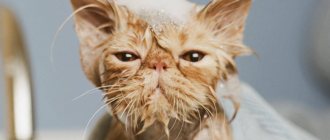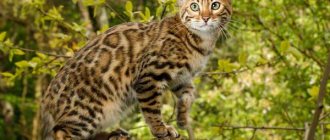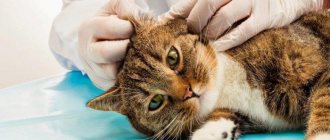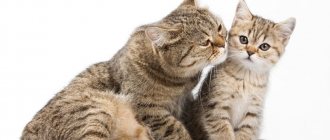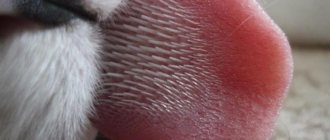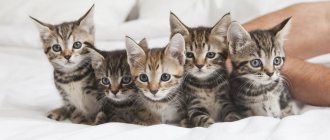Top ten smart breeds
There are some breeds whose representatives are considered a little smarter than others.
Skogcat - Norwegian forest cat
The ancestors of these cats lived in the harsh conditions of the Norwegian forests. Cold winters and difficulties in obtaining food made them strong, resilient and savvy. Representatives of this breed lived in packs, which had their own laws. Living with people, in a family, they unconditionally accept existing conditions and try not to violate them. They love communication with children, do not mind other pets in the family, for them the owner is the leader of the pack. Commands and requests are understood perfectly, they sense the owner’s mood and do not interfere if he is busy or out of sorts. They differ from other breeds in that they cannot tolerate affection and tenderness.
Maine Coon
This is the largest cat breed, some representatives can weigh 12-15 kg. They are very clean and tidy, adhere to the daily routine and living conditions. They eat in a designated place, do not steal food or beg. Going to the toilet - only in the tray, damaging furniture - they won’t even think about it, playing pranks or causing mischief - this is not for them. They are thinkers and contemplators and love affection. Friendly to children, other animals, and strangers. They are easy to train and learn to walk on a leash.
Bengal breed
Siberian cat
The Siberian cat is a hunter and watchman, ideal for keeping in a private home. The mice themselves will avoid the house. She is distrustful of strangers when meeting them, but quickly gets used to them. She is friendly, affectionate and obedient towards her family. Comes running at the first call of the owner.
He is distinguished by a good memory, determination and patience in achieving his goals. If you want to hide something from her, hide it “under seven locks.” If she wants to open a simple door, she will do it, no matter how long it takes.
Bengal cat
The Bengal cat is smart, cunning and has a good memory. He remembers commands quickly and executes them correctly. Cunning allows you to achieve what you want by any means. If you don’t want to give her something, she’ll figure out how to distract you, and at that moment she’ll take what she needs.
It is difficult for these cats to live in an apartment - only a large house with access to all rooms. Only then will she feel in her element - constantly exploring everything and moving from one room to another. You can pacify restlessness if you devote a lot of time to her every day - play, hide her toys and send her on searches. It is advisable to equip it with many loopholes, stairs, tunnels - only then will it not damage furniture and other things.
Abyssinian breed
Abyssinian cat
Abyssinians are inquisitive animals. Not a single event in the house will take place without their participation, be it repairs, cleaning or welcoming guests. Despite this, he loves quiet evenings in your company and responds to affection and tenderness. Frequent long-term loneliness for her is stress, which can lead to illness.
A good memory allows you to remember entire phrases and know their purpose. If you repeat “let’s go have tea” before drinking tea, over time this phrase will make you run to the kitchen ahead of you. Many commands can be taught this way.
Balinese cat
If you give her a lot of attention, praise her, play with her, pet her often, she will be devoted until the end of her days. If you are distracted for a long time, you will quickly remind yourself of yourself with your pranks. Plays great with children and it is not clear who is entertaining whom – the children’s cat or vice versa. She has the gift of quickly finding the right thing hidden in the most secret place in her absence, and she does it instantly.
Siamese cat
Rumors that Siamese cats are vindictive are only partly true. They also remember respect and kind feelings towards them well. They only get used to the owner who feeds them. They don’t like to play with children; they can respond to children’s insistence with aggression. It takes a long time to get used to strangers, and sometimes they simply resign themselves to the presence of a new family member. They do not tolerate other animals, they even treat their fellow tribesmen with coldness.
Russian blue
British cat
The British are very careful about their personal belongings. Toys, bedding, bowls - only the beloved owner is allowed to them. If the owner is absent for a long time, the Briton will be sad and may even refuse to eat.
Sphinx
These are very affectionate animals that become attached to their owner, acutely aware of his mood, poor health, and even just fatigue. They consider themselves equal members of the family, are present during meals, and do not refuse extra portions. Food is rarely superfluous for them due to their excellent metabolism. Excessive mobility alternates with sound, prolonged sleep.
Russian blue cat
This cat combines two things - she is playful, like a child, and smart, like an adult. All pranks can instantly stop if he feels that the owner is not in a good mood. She may wait patiently for someone to pay attention to her, but at the same time she will periodically look into her eyes and rub her head against her legs.
Despite the fact that cats of the above breeds are smart, the development of this quality largely depends on the attitude towards the animal in the family. In the absence of affection and attention, the cat becomes uncontrollable and wayward, and it is rarely possible to correct this.
Cat skeleton
The skeleton of a cat consists of 240 bones. This is more than a human, who has only 206. This allows the cat to increase mobility and flexibility throughout the body. This is also facilitated by the larger number of vertebrae - 50 pieces, while in humans there are only 35.
The structure of the cat's forelimbs is interesting: the collarbone is not connected to the rest of the skeleton. It is held in place only by muscles and tendons. The cat's front legs are attached to the body with such a soft connection that allows the cat to move smoothly and also jump from great heights. Remember this when you pick up a cat: never pull it by its front paws, do not yank it or drag it towards you if the cat resists. A cat's hind legs are very rigidly attached to the skeleton. During a jump, they are the supporting ones, so they are more developed and muscular than the front ones.
Cat skull
A cat’s skull consists of only two sections: the brain and the facial; in humans there are many more. An adult cat has 30 permanent teeth, which is 2 less than a human.
Our mustachioed pets lag behind us in the number of muscles in the body: cats have only 500, and humans have a hundred more. Although cats also have highly developed facial muscles, which is why they have good facial expressions. The cat’s body temperature is 2-3 degrees higher, and the pulse is faster due to the smaller body size: 130-150 beats per minute. These were differences in the structure of the skeleton, and then we can talk about other amazing features of the cat’s body.

